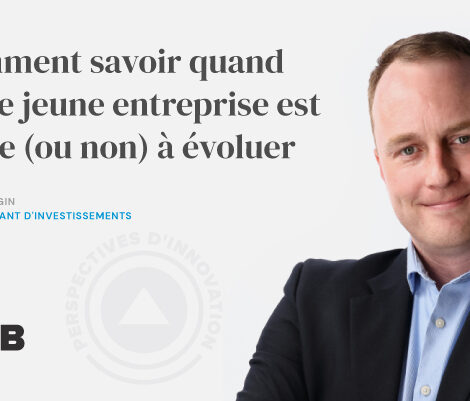- 29 décembre, 2009
- Capital de risque
- Comments : 0
Innovation Is A Better Way To Compete – Businessweek plugs Radian6
Don’t get bogged down in a price war or a race to imitate a rival’s product. Redefine your market instead, says entrepreneur-academic Richard Mammone By Richard Mammone – Businessweek, Viewpoint – December 29, 2009 | Click here for original article
The nuthatch and brown creeper are different bird species that look a lot alike and eat insects in the same wooded areas in North America. You might think they compete, but they don’t. In accordance with a common arrangement in nature that ecologists call the competitive-exclusion principle, the brown creeper starts searching for insects at the bottom of a tree while the nuthatch starts from the top.
Entrepreneurs can learn from this evolutionary process, which unfortunately isn’t very common in the business world. Business competitors will normally compete in a death match unless one finds a new market niche or a new process to address the existing market. The best strategy is to invest a modest amount of energy into an innovation, as the nuthatches did in moving to the higher branches. To start the innovation process that could lead to such a breakthrough, entrepreneurs should perform a detailed competitive analysis.
First, entrepreneurs need to make themselves aware of moves large and small that their competitors are making so that they aren’t blindsided or materially outmaneuvered. They can do this by collecting information about a competitor’s activities, using Google (GOOG) alerts and other services such as social media site monitor Radian6. A recent McKinsey survey shows that most executives conduct this type of ongoing competitor-intelligence analysis using many of the following sources: Web sites, press releases, job ads, Securities & Exchange Commission filings, ads, annual reports, industry market share data, and industry pricing data.
Blindsided, I lost my businessEntrepreneurs should then analyze the intelligence they’ve gathered and estimate the impact of each potential move on short-term and long-term market share, earnings, and cash flow. They should also look into what steps other industries might be taking. After that, it’s time to make a list of possible defensive and offensive responses to each identified threat.
I learned this the hard way. While I was focused only on improving the performance of my voice recognition software, a competitor blindsided me with a large marketing campaign for its product. That competitor now owns the voice recognition company I started—and got it at what I consider a bargain price. I wish I had paid more attention to what my competitor was doing. Had I done so and responded, I am sure my company would have grown further, which would likely have placed a larger valuation on my exit. Unfortunately, these tools were not available back then. Fellow entrepreneurs, make sure that you don’t make the same mistake I made. Pay attention to all the market intelligence you can get. Use your competitive intelligence to make good, innovative decisions.
The best type of market growth comes from making the pie larger for everyone, rather than just making your slice larger within the pie. The nuthatches managed to do this by moving up the tree. But that strategy is rare in business. The McKinsey survey also found that most businesses do not innovate to counter a competitor’s threat. Instead senior management reacts with a knee-jerk response, moving down the tree and matching a competitor’s price change or imitating its new product or feature. Entrepreneurs should aspire to be more like the innovative nuthatch and step up. Gathering market intelligence is the first step.
Richard Mammone, Ph.D., is a Rutgers University professor with a joint appointment in the Business School and the School of Engineering, as well as the Rutgers University associate vice-president of corporate liaison and executive director of the BEST Institute.


